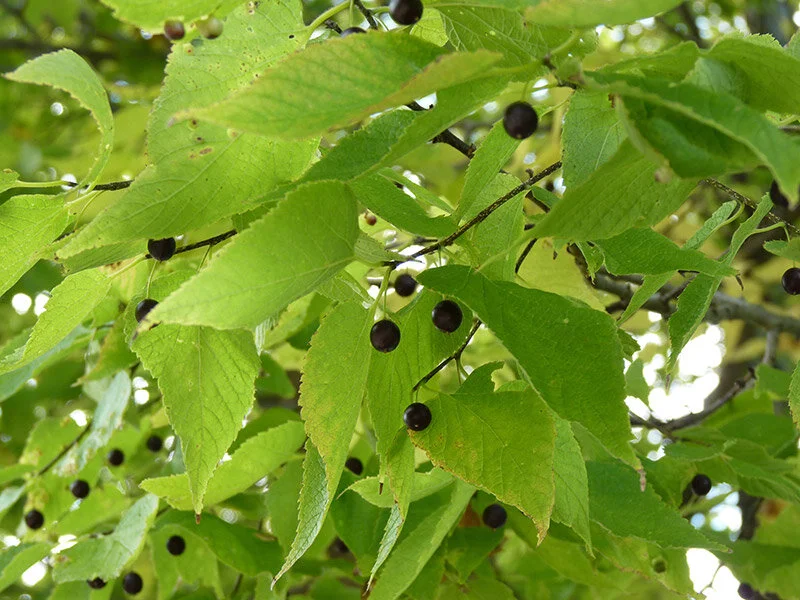Scientific Name: Celtis occidentalis
Height: 50-60 ft tall
Width: 30-40 ft wide
Growth rate: Fast (growing 12-24 inches a year)
Leaf Color: Medium green leaves that turn yellow in the fall
Hackberry Tree
Wildlife
If you like birds and butterflies, then you will want to consider a Hackberry tree. They are considered one of the 3 most important trees for wildlife and are a host plant to the approximately 50 different species of moths and butterflies that depend on them for their survival.
Birds love the Hackberry tree! The tree’s fruits are an important food source for birds in the fall and throughout the winter when other food sources have diminished. Birds that frequently visit this tree include cedar waxwings, eastern bluebirds, and northern mockingbirds.
If you want to attract birds and butterflies to your yard, then this tree will definitely give them a reason to visit!
Attributes
An extremely hardy native shade tree. Especially great for yards that have inhospitable conditions and need shade fast.
In the late summer and early fall, the tree produces small edible fruits that are enjoyed by both humans and birds alike. The fruit ripens in September and remains a critical food source for birds throughout the winter.
In the spring, the tree produces small inconspicuous greenish-white flowers that attract many species of moths and butterflies.
The typical lifespan of a Hackberry tree is 150 - 200 years.
Fun Facts
The fruit of a hackberry tree is edible and some make jellies and preserves with it. The taste has been described as a squash or date-like sweetness.
Hackberry fruits are one of the first human-eaten and stored foods.
Native Americans used the hackberry tree for food and medication for colds and sore throats.
An average hackberry tree stores 608.5 pounds of carbon
How to care for a successful tree
Hackberry trees are extremely hardy and resilient trees. Once the tree is established it can withstand both flooding and drought. Perfect for yards with inhospitable conditions!
Hackberry trees need full sun exposure ( 6 hours a day of sunlight a day)
All trees need watering the first year or until they become established.




